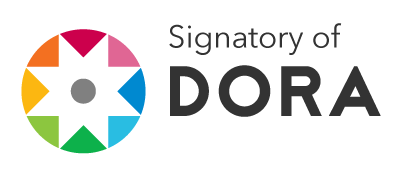The representation and evolution of the Chilean vision of the Pacific War through audiovisual discourse
DOI:
https://doi.org/10.37467/revvisual.v10.4591Keywords:
Pacific war, Chile, Audiovisual discourse, Nationalism, CensorshipAbstract
The article analyzes the representation and evolution of the Chilean vision of the War of the Pacific (1879-1883) through the audiovisual discourse, which includes a categorization of its formats, the temporal space and its positioning in a certain geopolitical-institutional context. A content analysis is made of the chapter Prat of the series Heroes: Glory has its price (channel 13) from the representation of the national vision, the representation of the other and of war. The results show a diversity of formats and intensification, in the period 2007-2010, in generating audiovisual content on this topic.
Downloads
Global Statistics ℹ️
|
468
Views
|
517
Downloads
|
|
985
Total
|
|
References
Arévalo Salinas, A. (2014). El rol de la prensa escrita en la reproducción de la violencia en el conflicto entre Chile y Perú. Propuestas de paz desde la comunicacion. Revista de Estudios Sociales, 48, 151-165. DOI: https://doi.org/10.7440/res48.2014.12
Arévalo Salinas, A. (2015). La importancia de los discursos de paz para la reconciliación. Un análisis aplicado a las relaciones entre Chile, Perú y Bolivia. En Arévalo Salinas, A., Iranzo, A. Y Cabral, R. (eds.), Comunicación, conflictos y cambio social (pp. 98-121). Universitat Jaume I de Castellón.
Bonilla, J. (2015). Algo más que malas noticias. Una revisión crítica a los estudios sobre medios-guerra. Signo y Pensamiento, 34, 62-78. DOI: https://doi.org/10.11144/Javeriana.syp34-66.ammn
Bongers, W. (2010). Dossier: El cine entre 1900 y 1940: reflejos y reflexiones en la literatura chilena y otros discursos. Taller de Letras, 46, 151-174.
Cerda, S. (12 de marzo 2007). Rafael Cavada y la suspensión de Epopeya: „Es descorazonante que TVN ceda a presiones de Cancillería“. Diario Emol. shorturl.at/adkty
Cornejo, T. (2013). Filmar a contrapelo: el cine de Helvio Soto durante la Unidad Popular. Atenea, 508, 13-29. https://dx.doi.org/10.4067/S0718-04622013000200002 DOI: https://doi.org/10.4067/S0718-04622013000200002
Enciclopedia del Cine Chileno (2019). Cronología del cine chileno. Recuperado de https://cinechile.cl/cronologia- del-cine-chileno/#tabscronologia|2
Escobedo Rodríguez, D. (2021). Allende y Balmaceda: Crónica de un suicidio anunciado. Revista Izquierdas, 50, 5. Fuenzalida, V. (1996). La apropiación educativa de la telenovela. Diálogos de la Comunicación, 44, 91-104.
Giesecke, M. (1999). La enseñanza de la historia. Convenio Andrés Bello. Hobsbawm, E. y Ranger, T. (2002). La invención de la tradición. Crítica.
Lavin de las Heras, E. y Römer Pieretti, M. (2015). Los orígenes del control informativo en las coberturas de guerra. Historia y Comunicación Social, 20(1), 121-135. DOI: https://doi.org/10.5209/rev_HICS.2015.v20.n1.49551
Iturriaga, J. (2006). Rentabilidad y aceptación. La imagen de Chile en el cine argumental, 1910-1920, Cátedra de Artes, 2, 67-87.
Martínez Guzmán, V. (2005). Podemos hacer las paces. Reflexiones éticas tras el 11-S y el 11-M. Desclée de Brouwer.
Mayorga, A. y León, C. (2007): El malvado siempre es el otro: Perú y su construcción discursiva en la prensa chilena. Universum, 2, 170-182. http://dx.doi.org/10.4067/S0718-23762007000200011 DOI: https://doi.org/10.4067/S0718-23762007000200011
Mahieu, J. A. (1985). Cine iberoamericano en Huelva. Cuaderno Hispanoamericanos, 416, 196-206.
Purcell, F. (2010). Cine, propaganda y el mundo de Disney en Chile durante la segunda guerra mundial. Historia, 43(2), 487-522: https://dx.doi.org/10.4067/S0717-71942010000200005 DOI: https://doi.org/10.4067/S0717-71942010000200005
Purcell, F. (2011). Cine y censura en Chile. Entre lo local y lo transnacional. 1910-1945. Atenea, 503, 187-201. http://dx.doi.org/10.4067/S0718-04622011000100010 DOI: https://doi.org/10.4067/S0718-04622011000100010
Renan, E. (1987). ¿Qué es una nación?; Cartas a Strauss; estudio preliminar y notas de Andrés de Blas Guerrero.
Alianza.
Rivera Olguín, P. (2018). Enseñando la guerra: los profesores de educación básica y la guerra de 1879 en la región de Tarapacá en Chile. Educación, 27(53), 128-154. https://doi.org/10.18800/educacion.201802.008 DOI: https://doi.org/10.18800/educacion.201802.008
Salinas, C., Stange, H. y Santa Cruz, E. (2017). Apuntes para la discusión de la relación cine-historia en la cinematografía chilena de ficción. Revista Austral de Ciencias Sociales, 25, 115-127: https://doi. org/10.4206/rev.austral.cienc.soc.2013.n25-06 DOI: https://doi.org/10.4206/rev.austral.cienc.soc.2013.n25-06
Santa Cruz, E. (2008). El cine chileno y su discurso sobre lo popular. Apuntes para un análisis histórico.
Comunicación y medios, 18, 57-69.
Sater, W. F. (2005). Politics and Urban Growth in Santiago, Chile, 1891-1941. Bicentenario, 4(2), 179. Sorlin, P. (1991). Historia del cine e historia de las sociedades. Filmhistoria online, 73-87.
Stange, H., Salinas, C., Santa Cruz, E. y Kuhlmann, C. (2019). La historia en el cine de ficción chileno: estrategias de producción de un sentido común audiovisual. Comunicación y medios, 28(39), 160-173. https://dx.doi. org/10.5354/0719-1529.2019.52507
Vaccaro, J. (2008). Hollywood va a la guerra la primera guerra mundial y el cine estadounidense (1917-1918). En Camarero, G. y de Cruz, V. (Coord.), I Congreso internacional de Historia y cine. Universidad Carlos III, 912-927.
Van Dijk, T. (1996). Opiniones e ideologías en la prensa. Voces y culturas, 10, 9-50.
Yin, R. (1994). Case Study Research – Design and Methods, Applied Social Research Methods. Sage.
Downloads
Published
How to Cite
Issue
Section
License
Those authors who publish in this journal accept the following terms:
-
Authors retain copyright.
-
Authors transfer to the journal the right of first publication. The journal also owns the publishing rights.
-
All published contents are governed by an Attribution-NoDerivatives 4.0 International License.
Access the informative version and legal text of the license. By virtue of this, third parties are allowed to use what is published as long as they mention the authorship of the work and the first publication in this journal. If you transform the material, you may not distribute the modified work. -
Authors may make other independent and additional contractual arrangements for non-exclusive distribution of the version of the article published in this journal (e.g., inclusion in an institutional repository or publication in a book) as long as they clearly indicate that the work was first published in this journal.
- Authors are allowed and recommended to publish their work on the Internet (for example on institutional and personal websites), following the publication of, and referencing the journal, as this could lead to constructive exchanges and a more extensive and quick circulation of published works (see The Effect of Open Access).













